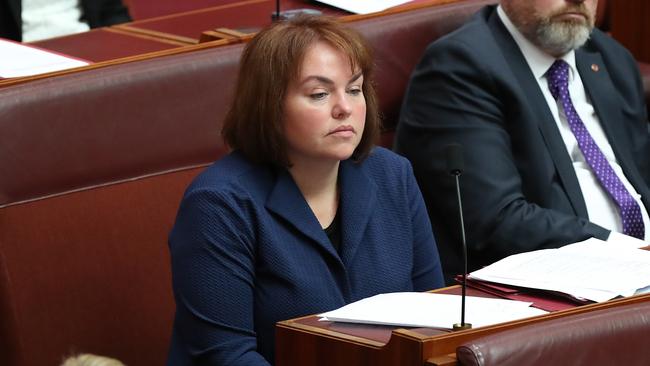Many welfare debts unfounded, others chased to grave
Thousands of so-called welfare debts are unfounded while others were only identified after a social security recipient had died.

There have been more than 230,000 assessments under the so-called robodebt scheme where the government has found there is no debt or the amount owed must be reduced, while 169 welfare recipients were already dead when a potential debt was identified.
A series of answers to questions on notice from Labor senator Kimberley Kitching revealed that the Department of Human Services, renamed Services Australia, approached representatives of “deceased customers” in 515 cases.
Of these, 73 debts were recovered and 442 debts written off due to insufficient funds.
Centrelink’s automated data-matching system was introduced in July 2016 and the figures supplied to Labor cover a three-year period from its start date.
Opposition National Disability Insurance Scheme spokesman Bill Shorten and Senator Kitching said the scheme had “reached a new low” and was malfunctioning.
“This scheme is no more likely to be fair and accurate on dead Australians as living ones,’’ they said. “Since July 2016, Australians hit with an inaccurate robodebt have then had it reduced 65,813 times, and completely overturned 168,284 times. This government has all the ethics of a graverobber.
“There is no low to which they won’t stoop in the pursuit of a dollar. And now we know robodebt won’t even allow deceased Australians to rest in peace.”
An assessment occurs when the government asks a person to clarify why there is a discrepancy between what they have reported to Centrelink and the Australian Taxation Office.
Welfare recipients are given time to clarify the discrepancy and debt notices are not always issued.
Government Services Minister Stuart Robert said last month that the department had identified 850,000 people whose income declared to Centrelink did not match their tax return, and were asked for a “please explain”.
“Twenty per cent of those have adequately explained it. Of the remainder, 0.8 per cent have been overturned on appeal,’’ he said.
“That’s a 99.2 per cent effectiveness rate for those who cannot explain why what they reported to Centrelink does not equal what they told the ATO in their tax returns.”
Social Services Minister Anne Ruston said there were a range of reasons for reviews into welfare payment discrepancies of dead people. “For example, where the department was not aware that the person was deceased, a delay in processing, a manual staff error, or a combination of these factors,” Senator Ruston said.
“Once the department is notified a customer is deceased, no contact or recovery action will be made until four weeks has passed since the date of death.”
If a debt had already been determined for a dead welfare recipient, the government was “legally obligated to pursue recovery of the debt”, but where the department was aware a person had died the income compliance process would not be initiated.
A debt could be written off if the person died leaving no estate or there were insufficient funds in the estate to repay the debt, she said.




To join the conversation, please log in. Don't have an account? Register
Join the conversation, you are commenting as Logout